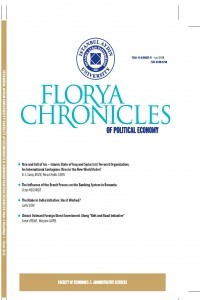Changing Population of Age Structure and Its Implications for Development
Changing Population of Age Structure and Its Implications for Development
Changing population of age structure strongly contributes to improvement
of opportunities and plays the most important role in safety and
governance challenges. These changes, which are influenced by numerous
social-economic, health, and environmental issues, have imperative
consequences for development. This study is an attempt to show the key
movements and variances in shifting age structures, and subsequent
implications for development. The age structure of population has
consequences for policy programs and resource distribution globally. The
study recommends that through investment in human capital, ensuring
access to healthcare and education for all at all ages, and opportunities for
productive employment, the full benefits of demographic dividend can be
achieved.
Keywords:
Age structure demographic transition, demographic dividend, dependency ratios, development,
___
- [1] BBS. 2018. Report on Bangladesh Sample Vital Statistics. (2017). Bangladesh Bureau of Statistics (BBS), Ministry of Planning, Government of Bangladesh.
- [2] Bloom, D, D Canning and J Sevilla. (2003). The Demographic Dividend: A New Perspective on the Economic Consequences of Population Change. Santa Monica: RAND.
- [3] Cincotta, R. (2009). Half a Chance: Youth Bulges and Transitions to Liberal Democracy. Environmental Change and Security Program Report 13: 10-18.
- [4] CSP. (2008). Democracy ratings drawn from: Polity IV Project. 2008. Polity IV Project: Political Regime Characteristics and Transitions, 1800- 2007. Center for Systemic Peace (CSP) and George Mason University.
- [5] Liddle B. (2000). Population Growth, Age Structure, and Environmental Impact. Population and Environment, 21(4): 385-411.
- [6] Mondal MNI, Shitan M. (2014). Relative Importance of Demographic, Socioeconomic and Health Factors on Life Expectancy in Low- and Lower-Middle-Income Countries. J Epidemiol, 24(2):117-124.
- [7] PRB. (2018). World Population Data Sheet 2018. Population Reference Bureau (PRB), Washington, DC; USA.
- [8] Singh, S, J Darroch, L Ashford and M Vlassoff. (2009). Adding It Up: The Costs and Benefits of Investing in Family Planning and Maternal and Newborn Health. Guttmacher Institute and United Nations Population Fund (UNFPA), New York; USA.
- [9] UN. (2017). World Population Prospects: The 2017 Revision. United Nations (UN), Department of Economic and Social Affairs, Population Division (2017). New York: United Nations.
- [10] UNDP. (2018). Human Development Indices and Indicators: 2018 Statistical Update. United Nations Development Programme (UNDP), UN House.
- [11] WB. (2008). Governance ratings drawn from: Freedom House. 2008. Freedom in the World. New York: Freedom House; World Bank (WB). 2008. Governance Matters 2008. Washington, DC, USA.
- ISSN: 2149-5750
- Yayın Aralığı: Yılda 2 Sayı
- Başlangıç: 2015
- Yayıncı: İstanbul Aydın Üniversitesi
Sayıdaki Diğer Makaleler
Investigating the Impact of Facebook on Consumer Attitude
Short Notes on Capacity Building Workshop in Post-Conflict Regions- 28 July 2020
Changing Population of Age Structure and Its Implications for Development
Nazrul Islam MONDAL, Nuruzzaman KHAN, Mohammad Rocky KHAN CHOWDHURY, Shariful ISLAM
